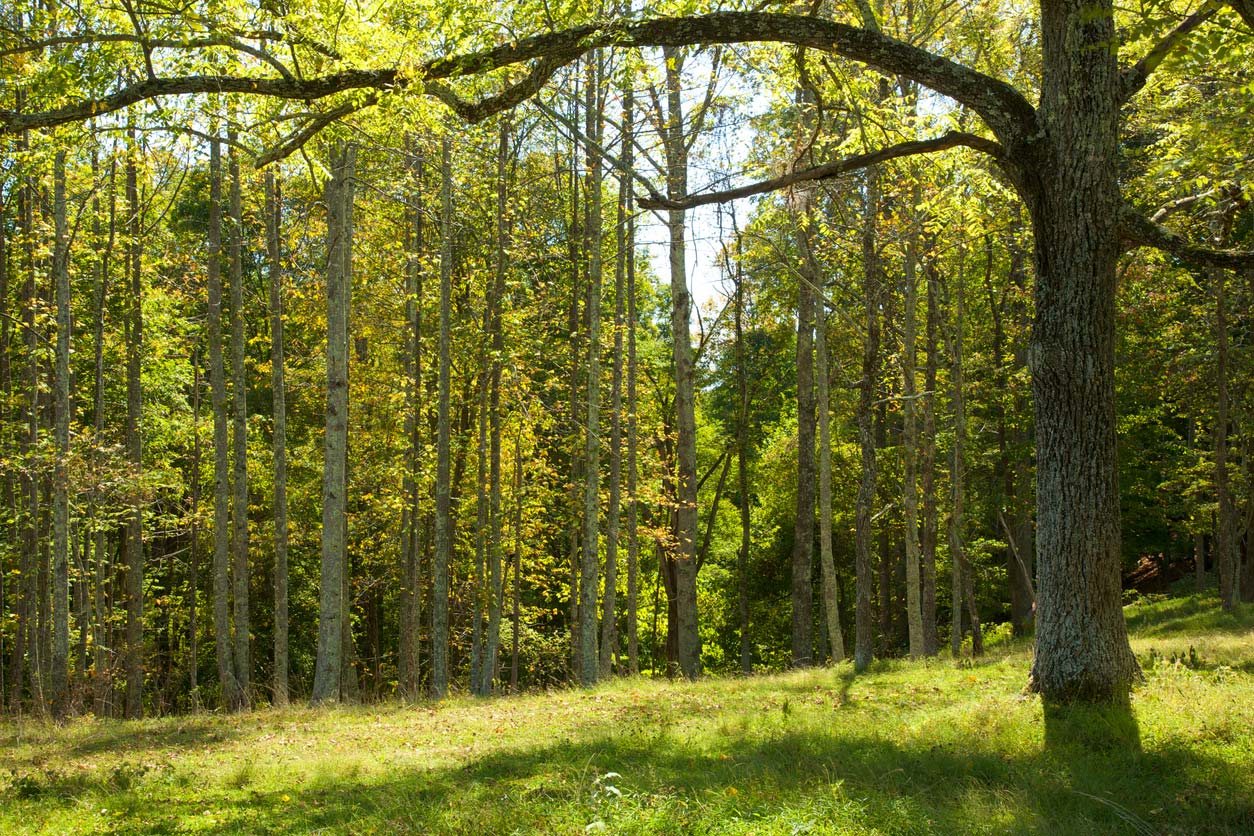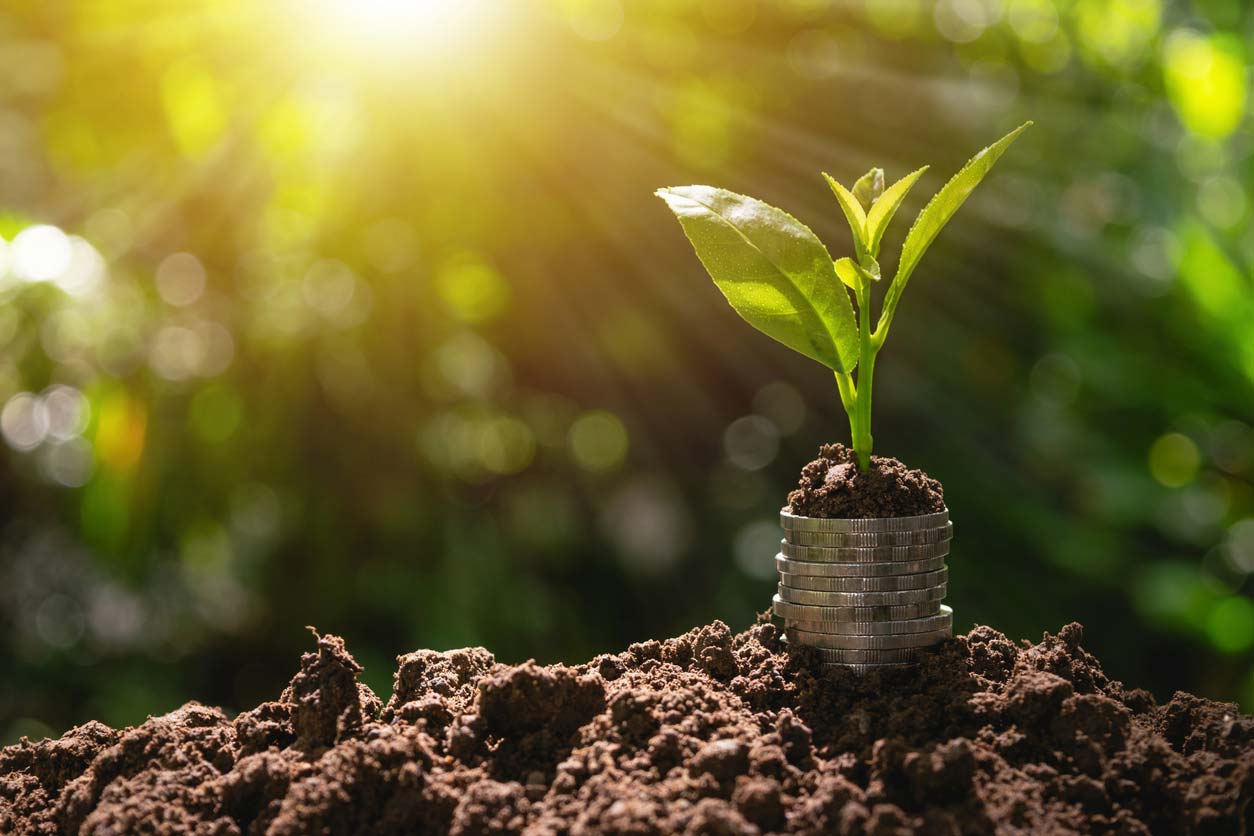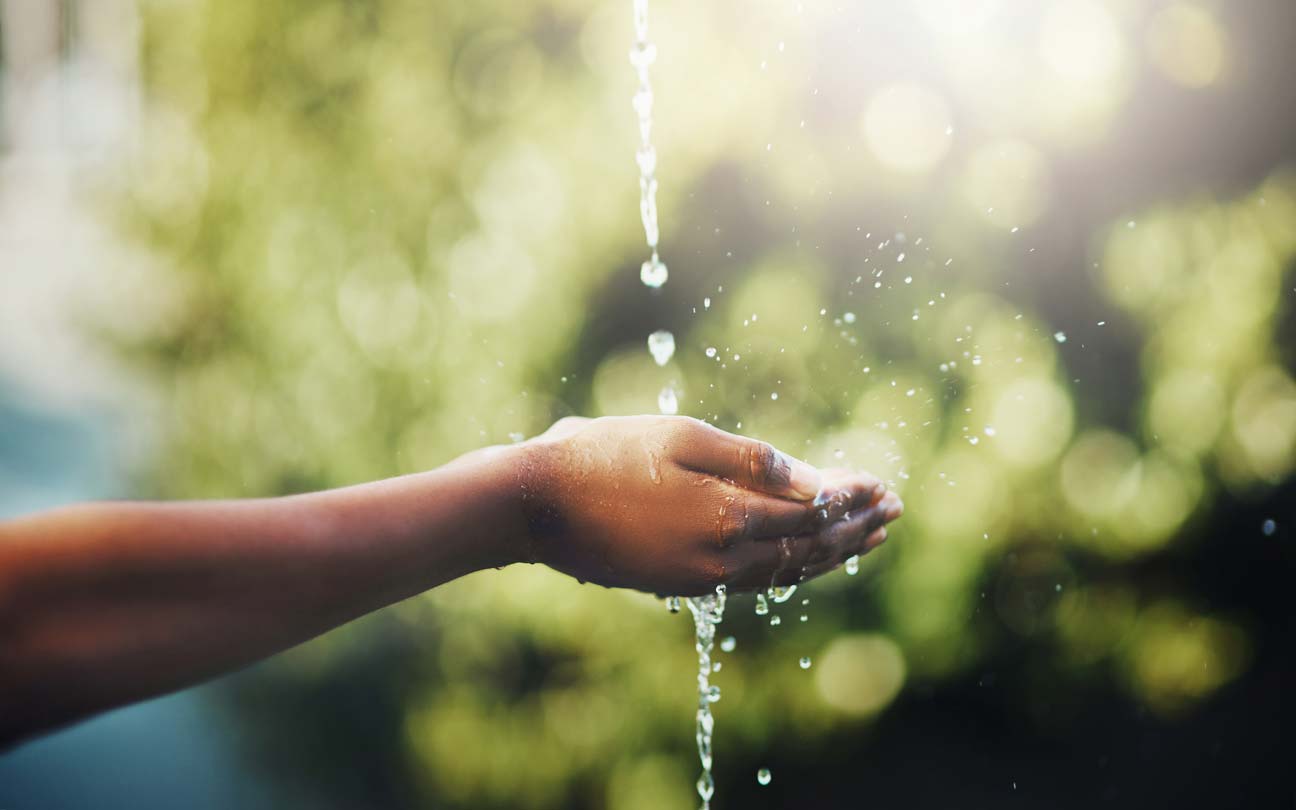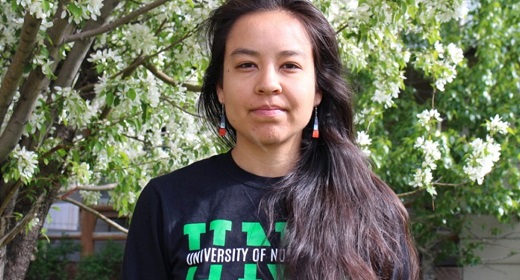by Ocean Robbins: Welcome to Food Revolution Conversations…
I’m Ocean Robbins, co-founder and CEO of Food Revolution Network. Our focus in this interview is on how we can learn from indigenous wisdom to help us restore right relation with our own lives, with each other, and with our planet.
I’m thrilled to be joined for this interview by indigenous activist, ecologist, scientist, and healing foods advocate, Lyla June. Lyla is an indigenous environmental scientist and healthy food systems advocate. She’s a doctoral student at the University of New Mexico and an educator, community organizer, musician, and inspiration to a whole lot of people, including me.
Her work focuses on personal, collective, and ecological healing. Her internationally acclaimed performances and speeches bring together prayer, hip hop, poetry, acoustic music, and words. Her personal goal is to grow closer to Creator by learning how to love deeper. Lyla, welcome.
Lyla June: Thank you so much for having me, Ocean.
Indigenous Cultural Sophistication

Ocean Robbins: Well, I’m just thrilled to have this time with you. There’s a bit of a myth that indigenous people, pre-Columbus, were primitive. Yet, the truth is that there were extremely sophisticated cultures that did something that certainly nobody in industrialized civilization has come close to doing, which was actually making the Earth more and more abundant and beautiful. Can you share a little bit about that and what your studies have taught you about the history there?
Lyla June: My PhD work is at the intersection of indigenous food systems and indigenous land management, and how we would cultivate the natural food-bearing capacity of entire bioregions. Even though I’m getting my PhD in it, I’m still like a little kid compared to some of my elders who have been not just talking about this, but living it their whole life. I’ll just illustrate what you’re talking about with a couple of examples.
The Shawnee
Lyla June: One is in Kentucky. The Shawnee ancestors, they actually created a food forest. We know this because the fossilized pollen record is there in the ponds. And you can date the macrofossils and the pollen to see how old it is. What we see is that about 3,000 years ago, the Shawnee Osage ancestors, in what we now call Kentucky, actually sustained a food forest of black walnut, chestnut, hickory nut, acorn, sumpweed, goosefoot, all these edible plant species in that area for 3,000 years.
We also see fossilized charcoal, which indicates that they managed this with (low-intensity burns) clearing the understory, making sure you only have 13 trees per acre — which is a very thin forest. Because around the US today, we see a lot of overgrown forests where you have a lot of really sick trees instead of a few really robust and healthy ones.
We saw this influx of pollen come in 3,000 years ago and completely replace a cedar and hemlock-dominated forest. They just moved in, transformed the whole place into a food forest, and persisted for 3,000 years.
The Bella Bella
Lyla June: Another example is the Heiltsuk (also known as Bella Bella), community in British Columbia. They’re right up between Vancouver and Alaska, on the coastline in British Columbia. They hand plant kelp forests — to this day. And they’ve been doing it for thousands of years. The effect of this kelp forest cultivation is that it increases the surface area upon which the herring, which is a small, silver fish, can lay its eggs.
The Heiltsuk people build these huge forests of a special kelp that grows faster than any plants were used to. I think it’s like a meter a week or something like that. And so, you have abundant surface area. This increased surface area provides a home for the fish eggs that in turn provide the foundation for an entire food web. The seals eat them, and they in turn become food for the orca whales. The salmon, the wolves, the eagles, the humans — everyone up the food chain depends on the herring roe.
And, of course, the herring is very prominent in their (the Heiltsuk’s) creation stories, in their histories, in their cultural knowledge and stories. Essentially, it’s an important part of the ecosystem there, and they understand that. And they cultivate it. That’s another example.
The Amah Mutsun
Lyla June: In Santa Cruz, California, you have the Amah Mutsun people. The chairman, Val Lopez, said that their rule of thumb was to have about 13 trees per acre. (By having a few big strong trees, with plenty of space between them, they were able to dramatically reduce forest fire danger.) The oak groves provided abundant acorns, which are actually incredibly delicious and nutritious. These oak trees have fire-resistant bark because they co-evolved with human fire for so long.
Clam Gardens
Lyla June: Then, one of the other examples I like to give is the clam gardens. The clams like to exist a certain depth below the ocean surface. And so, along the coastline, many nations will actually increase the depth of the shoreline to create habitat for these clams.
And so, what I’m finding is a lot of indigenous food systems are about habitat construction, such that your food will come to you, and you don’t have to go to it. And you not only create food for yourself and your people, but for all living beings because you’re not the only one eating those clams.
Resource Overconsumption

Ocean Robbins: Well, thank you for sharing all of that. It’s actually very heartening, I think, for those of us who think that we have to invent something that’s never been before in order for our species to survive — to realize that we have some wisdom we can draw upon. Just to illustrate… We are on resource consumption overshoot around the world. We are depleting our aquifers at an unsustainable rate and billions of people are going to run out of drinking water in the next generation.
We are depleting our topsoil. In fact, UN researchers have estimated that we could run out of farmable soil in the next couple of generations because the amount of soil that we have to grow our food is a third of what it was in the US when Columbus landed.
We’re destabilizing our climate, creating more droughts and floods. And with less topsoil, they cause more damage. Droughts are more intense because there’s less water stored in the soil. Floods are more destructive, and they wash away what soil there is. And it doesn’t hold the water.
All of this can cause devastation. And all of this impacts our ability to grow food for future generations. These kinds of principles, how we walk and live and grow our food, are fundamental to our survival.
Stewards of Biodiversity

Lyla June: Absolutely. About 60% of the foods that the world enjoys come originally from indigenous peoples of the Americas because our food sciences were so sophisticated.
As you may know, native peoples — meaning people with thousands of years of history in a place — are about 5% of the global population. And yet, they’re overseeing, according to a recent UN report, 80% of the world’s biodiversity. This idea that we were simpletons or primitive couldn’t be farther from the truth because we had an incredible knowledge of the biodiversity principles that actually cultivated and, like you said, regenerated the land around us.
Ocean Robbins: When you say that indigenous peoples represent 5% of the world’s population and yet are stewards of 80% of the world’s biodiversity, do you mean that that the animal and plant species of the world are hyper-concentrated in areas that indigenous peoples are helping to protect?
Lyla June: Yes, they hold tenure over about 20% of the Earth’s land which holds about 80% of the world’s biodiversity, by species count.
The Vitalness Of Indigenous Peoples
Ocean Robbins: That’s actually good news for fans of biodiversity because it means that a lot of the world’s species are currently, to some extent, being protected by indigenous peoples who have a pretty good track record of caring for biodiversity. But, of course, in many parts of the world, those lands are threatened, even today. It isn’t just that encroachment on native peoples happened hundreds of years ago. It’s continuing every day in many of those very hotspots that you’re describing with oil exploration, with deforestation, with cattle ranching, and so forth.
Lyla June: Yes. Native peoples aren’t just a cute thing to have around. They actually are vital to the persistence of humanity. And it’s time to stop treating us as if we’re disposable because we’re not.
And so, it’s not just about protecting those lands. It’s about protecting the people. And it’s not just about protecting the people’s bodies. It’s about protecting our knowledge because that is what is sustaining all of it.
Living Within a Capitalist System

Ocean Robbins: It seems to me that one of the challenges that some indigenous peoples face is how to interact with a capitalist monetary system and yet preserve their values, culture, and so forth. And for people that are truly able to be self-sufficient, it’s one thing. But when they become dependent on external inputs, whether it’s technology, or internet, or food systems, then it’s much harder to maintain sovereignty within their own communities.
What is your take on how to navigate that? Every community is different and every context is different, but what are some of the principles you hold for how indigenous peoples can preserve, sustain, and deepen their culture or their values in communities around the world, care for their ecosystems that we all depend on for our survival, and at the same time, find a way to live in relationship to the modern world?
Lyla June: Well, that is the million-dollar question. But from what I’ve seen, a huge problem is solved by doing exactly what we’re doing, which is debunking the myth of who is civilized and who is not. I think we have to debunk this mythology that says that native cultures are inferior, and US Western civilization is superior. And when we do that, we’ll make more room for indigenous worldviews, cosmologies, and practices.
An Interconnected World
Ocean Robbins: One of the things that’s occurring to me in this conversation, too, is that nobody exists in isolation. We all breathe the same air, drink the same water, and share a common climate. And in that sense, the survival of indigenous peoples does depend in some way on the survival of humanity as a whole.
And so, in that sense, I think we come back kind of full circle to say, not just how can indigenous people survive in face of the onslaught of violence, but also how can the industrialized world reconnect with our rightful place as humans on this planet?
And it seems to me that most people I know in North America carry a deep feeling of loneliness in their hearts, a feeling of uprootedness, a feeling of not quite belonging. And we address that in all kinds of different ways. I think that loneliness kills more rapidly than cigarettes do. And it’s one of the epidemics of the industrialized world. Do you think that there is indigenous wisdom that could help everybody, regardless of where their ancestors come from, or where they live today, to feel more of a sense of belonging to the world?
Honoring Our Ancestors

Lyla June: Yeah. If you go back far enough, we are all of an indigenous people or peoples.
I mean, I’m half European by and large. My European side does have a little bit of native tribes mixed in there. But for the most part, my ancestors on that side are Scottish, Scandinavian, and maybe other things.
And when I was in the hogan with my mother’s people — it’s a traditional sacred building — as we sat in it, we had to introduce all of our clans. All of our four grandparents, we have to say where they’re from. So I was saying the European ones, and all of a sudden, I could feel those ancestors coming in. And I was overtaken by their love and their kindness and their beauty.
My whole life, I had been trained to think that white was bad. That white people were the slave owners and the ones who committed genocide. But in that ceremony, they came very strongly. And I knew that I was indigenous all the way around, and that I had to honor ALL of my ancestors.
And so, I did go back to Europe. I went to the British Isles, Switzerland, Italy, and France, and I prayed on the mountains. I could feel that we Euro-Americans come from a land, too.
We Are All of the Land
Lyla June: And I really saw that our task as white people is to shake the amnesia and to remember that we are from beautiful lands and goddess-worshiping peoples. They found these clay effigies all over Europe. And one of them was found in German soil. And it’s of a woman. And it’s supposed to symbolize the fertility of the earth, the fertility of women and honoring women. And they radiocarbon dated it; it was 40,000 years old. So this is how long our people have been using their hands to mold the clay into an effigy to honor the sanctity of the earth and of women. And that’s who we are (and what we come from).
And the thin wall of time that dominates our understanding of Europe — King Louis, Napoleon, The Inquisition, the witch burnings — that’s not who we are. That was a very hard time where our people suffered greatly, and much of the indigenous knowledge was lost with our grandmothers.
But if you go before that, you will see rich, indigenous European culture. And so absolutely we do belong; we are of a beautiful people.
Ocean Robbins: Oh, thank you. There’s something kind of fundamental here to how we perceive ourselves as human beings. The truth is, I can sometimes look at humans as a bit of a scourge on the Earth. I mean, we torture animals in factory farms. And everywhere we go, people tend — many of us — to travel around and leave things worse than we found them. But you’re telling us that’s not who we are, that we actually have the capacity to live in harmony with nature and to make things more beautiful for our being here. That’s good to know, to say the least.
Indigenous Farming Practices

Ocean Robbins: Indigenous farming practices have played a significant role in organic farming and integrated pest management in modern permaculture, as practiced today. Can you give any examples of ways that indigenous practices are actually being widely used right now?
Lyla June: Well, of course, you have polyculture. That was our general principle, right? The more, the merrier. So if you just look at our corn, for example, we have hundreds and hundreds and hundreds of varieties of corn. Even those varieties are ever-evolving because we are continuously cross-pollinating.
I brought some Pueblo corn to my friend earlier this spring, and he crossed-pollinated it with his blue corn. We had two different strands of blue corn to create a new blue corn. That is what we’re always trying to do is diversify genes at every opportunity.
You also have, of course, the biochar movement coming up, which is funny because indigenous peoples always burned pretty much from coast to coast. You’d see widespread, low-intensity burns that actually would enhance the soil. You have the transformation of debris into potassium, nitrogen, and other bioavailable nutrients that the grasslands love. One tablespoon of biochar has a football field’s worth of surface area. Because the charcoal has all these miniature apartments for microbes inside of it. When you burn, you’re not just injecting bioavailable nutrients into the soil. You are also creating homes for microbes and to create a living soil.
Water Systems & Aquaculture
Lyla June: A lot of us are thinking about water, right? Here’s a really crazy idea: don’t pollute the surface water! That way, you don’t have to drill so deep into the earth to get water. It’s just flowing right there to you.
I mean, Flint, Michigan, and all of the rivers that are full of fertilizers and other toxic materials, they’re all helping us learn what does not work.
One last quick example I’ll give is Tenochtitlan, which is now Mexico City. Before the Spanish arrived, it was a floating city on Lake Texcoco. And they actually created these floating gardens.
Imagine a city excreting poop and urine all day long, and they still didn’t toxify their water source. They had incredible ways of actually recycling their dung — their own human dung! It was so valuable. Your own poop was so valuable you could take it to the market in Tenochtitlan and trade it for things.
Ocean Robbins: Wow. That’s quite an image. We joke about selling S-H-I-T, but it actually was happening. Well, that’s fascinating.
Polycultures
Ocean Robbins: And just to add a couple of other pieces, you’ve used a couple of phrases. You talked about polyculture, and you talked about food forests.
And I just want to clarify that polyculture means multiple plants. Instead of a monocrop where you’re just growing a giant field of one thing, you’re having companion planting and plants mixing it up. And planting one thing in one season and another thing in another season. That creates a diversity in the soil. Different plants give different things and take different things. And they balance each other out. You actually create richer and richer soil when you do that in an intelligent way, like the three sisters, for example. Which are squash, beans, and corn.
Lyla June: And the fourth, which is amaranth.
Ocean Robbins: Amaranth. Yes — and they work in exquisite harmony.
And then, there’s also, of course, planting nitrogen-fixing plants — cover crops as we call them sometimes.
Lyla June: Yes.
Ocean Robbins: That also enriches the soil. It actually adds nitrogen to the soil, which then makes the next plants that come after more abundant and vibrant. And these are all ways we restore the soil rather than just extracting from it.
Lyla June: Correct.
Food Forests
Ocean Robbins: And a food forest, if I understand it correctly, that refers to when you have trees, fruit trees, or nut trees, or other kinds of food-producing trees. And then you’ve also got other plants at the base of them.
Lyla June: Yes.
Ocean Robbins: And there’s a harmony there as well, right?
Lyla June: Yes. There’s a lot of cool paleo-ecological work being done, which basically means looking into the past. What did the forest look like 10,000 years ago, or 30,000 years ago? Every single study that I’ve been perusing talks about how there was a hyper dominance of edible plant species, especially around certain indigenous settlements. People would plant (and nurture) the plants that gave them food.
Humanity’s Spiritual Crisis
Ocean Robbins: I want to kind of take us to a broader level here. I’ve heard you describe the problems humanity is facing in the industrialized world as being in part a spiritual crisis. What do you mean by that? How do you see that?
Lyla June: Well, we don’t understand how the world works. We don’t understand that I’m not just talking to Ocean right now. I’m talking to Ocean and all of the spirits that hang out with Ocean, whether they are found, or whether they are lost. We are not only biochemical beings. Even when you’re sitting, you’re not just sitting. There’s so much going on inside of you. Not only are we biochemical, but we are also interacting with a spiritual world. And sadly, the enlightenment era has sort of dumbed our senses to be able to understand that we’re a part of a living, breathing, spiritual world as well.
So, when we’re restoring food systems, we’re also restoring communities. And we’re restoring spirits; we’re restoring cultures.
Cultivating an Inner Environment

Lyla June: So, I’ll just end by saying this. What I was taught by my elders is that to hold the ancestors in you and to be the hands and the feet of Creator, we need two main conditions: nothing for the self, and no fear. And so, that nothing for the self piece, it means you’re not doing it for fame and reputation. And you’re not doing it just for money.
So, it’s not only about cultivating food forests and gardens, and organic farming. It’s about cultivating an inner environment that can hold space for the ancestors, for the angels, or whatever your culture calls it, so you can actually become the hands and feet of something greater than yourself.
Those two conditions, nothing for the self and no fear, have really — once I learned that, a lot of things in my life had to change. And I’m still fine-tuning it. But imagine if we taught young people that in school. It would change everything. But instead, we have a homecoming queen and a homecoming king. And you want to be the most popular. You want your reputation out there. And you’re going to school to get a job to get money.
So, we almost train the medicine person out of every child. And I think that what we’re trying to cultivate in addition to these food systems, is an inner environment that can hold that love and that compassion that makes human cultures healthy.
Ocean Robbins: Thank you. I would also add that gardening, just touching soil, interacting with plants, can be very healing and restorative. In my experience, there’s something satisfying about it that goes beyond the fact that I get food, or that I have food security. Those are wonderful things, but there’s also something about being connected to a sense of place.
There’s nothing quite like actually getting your hands in the dirt and actually feeling the source of life growing in your own backyard or in your own kitchen, if you just have little sprouts on the counter, to feel like, “Wow, I’m part of life happening.” It’s very humbling in a way, because we feel our sense of dependency on the natural world, which really does give all of us life.
A Song About Water

Ocean Robbins: Lyla, I know that among other things you are an artist, with words and song. And I wonder if you would share something with us today as we complete our time together?
Lyla June: Sure. I was going to read a poem. But now, as we were talking, I was remembering I wrote a song about water. This is going to be released soon with the music video and all of that. It’s actually mostly the words of a Mescalero Apache elder by the name of Oliver Enjady. So as I sing this song, keep them in your thoughts. I just told him, “What about water? What do our old people tell us about water?” And this is what he said. And I said, “How do I put that into a song?” He gave me a long list of notes that I tried to turn into a song, so here we go.
[SINGING] He said, it’s not a song; it’s a way of life. It’s a forever thing; it’s a message. He said, you can say that our water is life. You can sing it again and again, but will they listen?
Are we going to stand by these words? Are we going to find a way to change the way we’re living, Mother Earth? She feels everything, and it hurts. Like the moon, like the body of a woman, she is changing.
Can we return to the times when water was alive, when we prayed at her edge, and gave thanks for this life? When the water fell from the sky, and we drank from her bosom. When the water fell from our eyes, and the water fell from our wombs? When it rose up to the surface, now we knew every spring. No fear of competition, just a relative to all things.
We are people of the sun. We are people of the water. We will celebrate our sons, we will celebrate our daughters: give them ceremonies, so when the drought comes, they’ll be ready.
Will the next war be for water? All our solutions are part of the problem, can’t win war with war. There is more than one creation story. Worlds have died, and worlds have been reborn before.
When you touch the water, you touch the world. From tallest peaks to Gulf Streams, the memories they hold. We sell her by the acre-foot, and treat her as our captive. The rivers are undrinkable while the aquifer’s extracted.
Our food will need water to grow, but do you have to take it all? We try to hold her and control her as we watch our empire fall.
He said it’s not a song, it’s a way of life. It’s a forever thing; it’s a message. He said, you can say that water is life. You can sing it again and again, but can you live it?
Healing Through Connection to the Earth
Ocean Robbins: Thank you.
Lyla June: Thank you for letting me share.
Ocean Robbins: As you were sharing, it really moved me when you sang about the water that flows in our tears and flows from wombs. And I felt this reality that we’re mostly water.
And suddenly, this illusion that humans are separate from the Earth just kind of dissolved for me, and I felt the reality that we are the Earth. We are part of the Earth. And the Earth invites us to come home to that knowing so we can reclaim our truth, which is that we are expressions of life on this planet — longing, I think, to heal and get to be part of that healing.
Lyla June: I’m glad it could have that effect.
Ocean Robbins: Yes. Well, we’ve been talking here with Lyla June, indigenous activist, scientist, ecologist, advocate, singer, and songwriter. You can find out more about her at: lylajune.com.
She said, it’s not about the ego, it’s not about fear. It’s certainly not, and we also want to build connections. So, if people want to contact her, please do so.
Lyla, it’s been a real privilege to share this time with you, and I look forward to more in the future.
Lyla June: Yes. Thank you, Ocean. I appreciate it.




















































